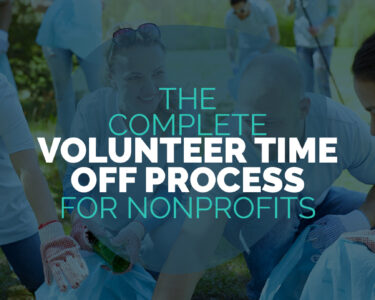Nonprofits across the country are struggling with the intense pressures facing them, both internal and external, as revealed in CEP’s 2025 State of Nonprofits report, released just over a month ago. What’s more, the communities nonprofits and funders work to support are already feeling the negative effects of these pressures.
In light of these challenges, both new and ongoing, calls for philanthropy to step up support have proliferated. Alongside those calls, savvy funders ought to be asking themselves an important question: how do we ensure that those we seek to serve through philanthropic giving have a say in how and where that money is used? Understanding current practices around feedback collection has never been more critical for organizations that are serious about maximizing their impact and building more equitable approaches to social change.
It is with that in mind that we release CEP’s latest research report, “Voices That Matter: How Nonprofits and Foundations Engage with the Communities They Support.” Drawing on data from a survey of more than 200 U.S.-based foundation and nonprofit leaders, the report reveals:
- The majority of nonprofit and foundation leaders say they use information provided by the communities they serve to guide and shape their day-to-day work.
- Foundation leaders say this input is extremely valuable for shaping their work — even more so than the expertise of their staff and board; one leader shared that it’s “imperative” for foundations to “stop and listen to what communities need and want, rather than us telling them what they need and want.”
- Many nonprofit organizations report using feedback from their program and service users to a considerable degree, most often adjusting their program offerings or providing new services based on what they hear.
The report also provides insight into a number of strategies and ideas that frequently arise when listening is under discussion — ‘closing the loop’ with those who give feedback, nonprofit limitations when it comes to gathering feedback, and funders’ understanding of the communities within which they work.
Closing the Loop
Closing the loop with those who give their time to provide their thoughts and opinions to the organization seeking them, an important component of high-quality feedback collection, is a relatively common practice at foundations and nonprofits, according to CEP’s survey. Despite this, fewer than 20 and 30 percent of nonprofit and foundation leaders respectively indicate that their organization always closes the loop with those they seek feedback from.
Nonprofits’ Capacity to Gather Feedback
Despite the importance of input from the people and communities they serve to their work, nonprofit leaders say they struggle with the amount of capacity needed for feedback collection. Moreover, compared to a similar survey of nonprofit leaders CEP conducted in 2013, this research reveals that the greatest challenge to nonprofit feedback collection has shifted over the last decade from the cost of collecting feedback to a lack of capacity or staff hours to collect feedback.
However, while almost all foundation leaders told us that they rely on information collected and shared by their grantees about the communities they serve to develop an understanding of those their foundation seeks to have an impact on, nonprofit leaders report that very few, if any, of their funders provide assistance — financial or otherwise — for collecting this kind of feedback.
Foundations’ Understanding of Communities
Finally, our report finds that there is a disconnect between funders’ self-perception and nonprofits’ reality when it comes to foundations’ understanding of the communities they seek to benefit. More than 70 percent of foundation leaders said that their organization’s funding priorities are “very well-aligned” with the needs of those they seek to benefit, a contrast to the fewer than 25 percent of nonprofit leaders who believe that ‘most’ or ‘all’ of their funders have funding priorities that reflect a deep understanding of community needs.
Nonprofits clearly see room for foundations to do better in this area based on our survey, suggesting that funders with a better understanding of the needs of those they seek to serve would better appreciate the challenges facing nonprofits, and might also change the way they provide funding to nonprofits. Said one nonprofit leader on the subject:
“Funders who were better educated and informed about the community members we serve would, without question, have a better understanding of the challenges we face in serving those community members, as well as a deeper understanding of the need for our work overall.”
Looking Forward: Listening as a Crucial Tool in Challenging Times
In a time when the nonprofit sector is already struggling with high rates of burnout, increased fundraising and staffing challenges, and political attacks from the highest government offices, helping nonprofits to understand what their clients and service users need will be crucial for foundations who want to help their grantees weather these unique storms.
Just as importantly to keep in mind, as one foundation leader told us: “We can all do a better job of talking to [our] neighbors and finding out what they think the solutions are, how they think we can improve community, and what that looks like.”
Seara Grundhoefer is an analyst on the Research team at CEP. Find her on LinkedIn.
Editor’s Note: CEP publishes a range of perspectives. The views expressed here are those of the authors, not necessarily those of CEP.
👇Follow more 👇
👉 bdphone.com
👉 ultractivation.com
👉 trainingreferral.com
👉 shaplafood.com
👉 bangladeshi.help
👉 www.forexdhaka.com
👉 uncommunication.com
👉 ultra-sim.com
👉 forexdhaka.com
👉 ultrafxfund.com
👉 bdphoneonline.com
👉 dailyadvice.us




